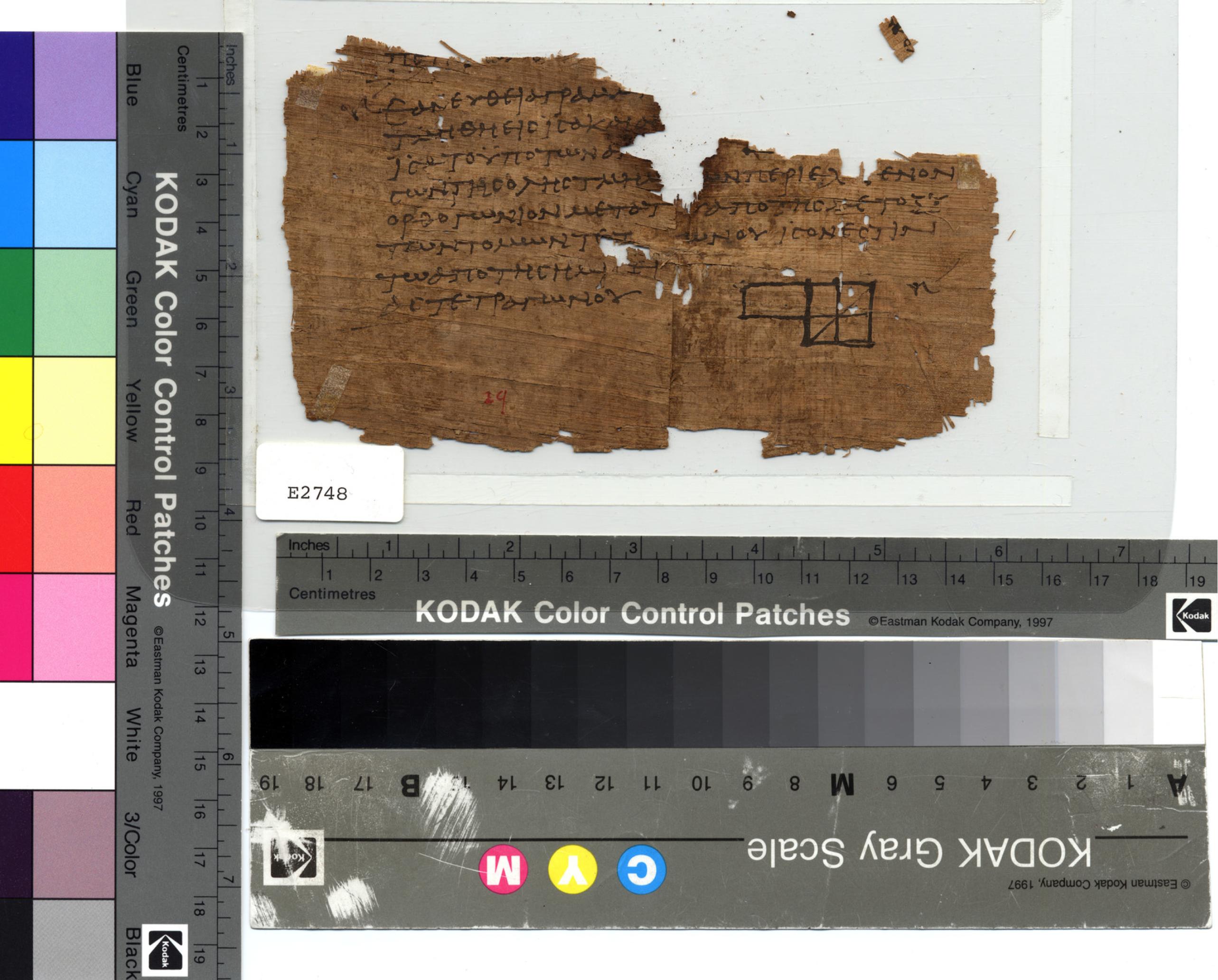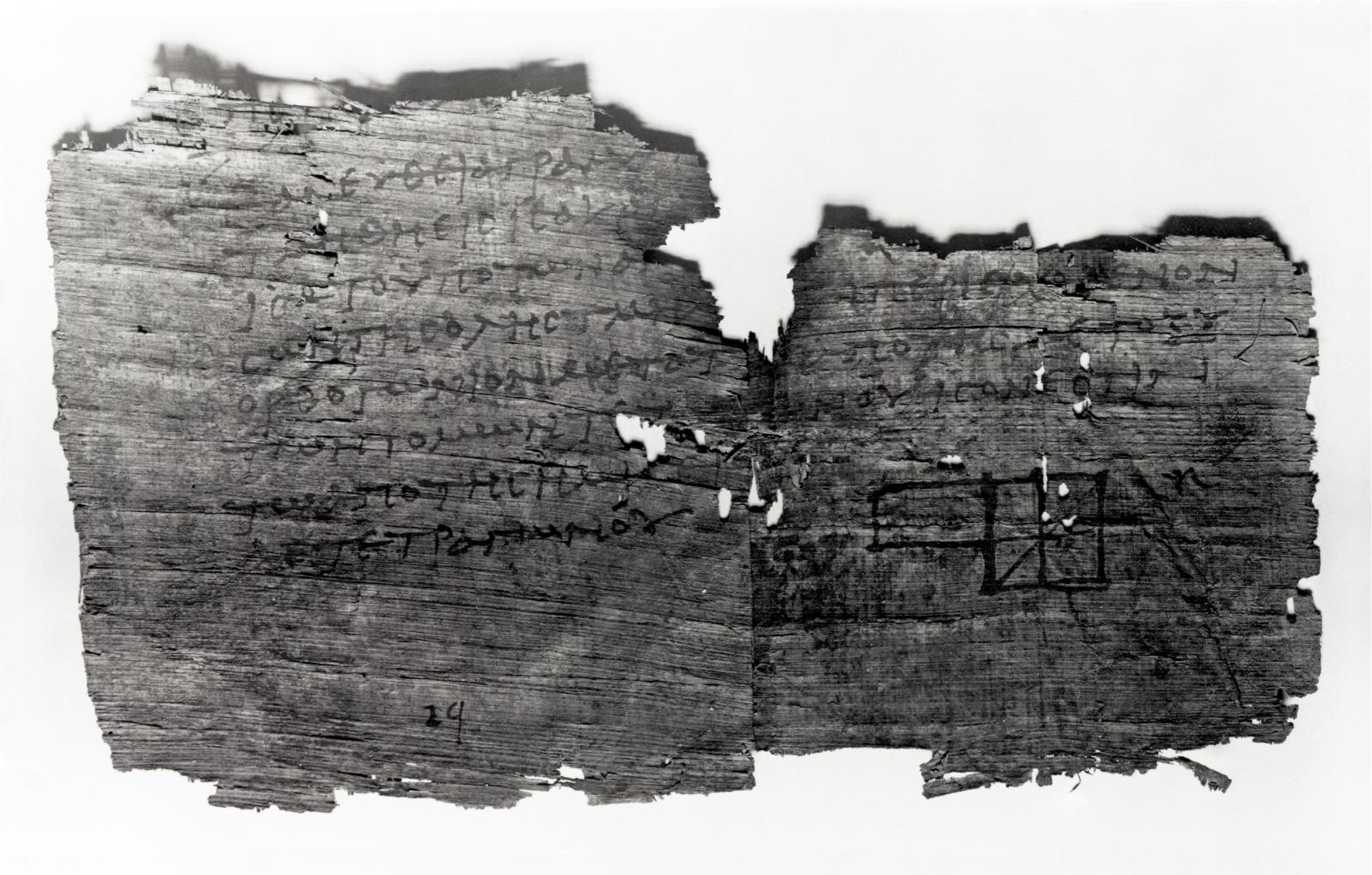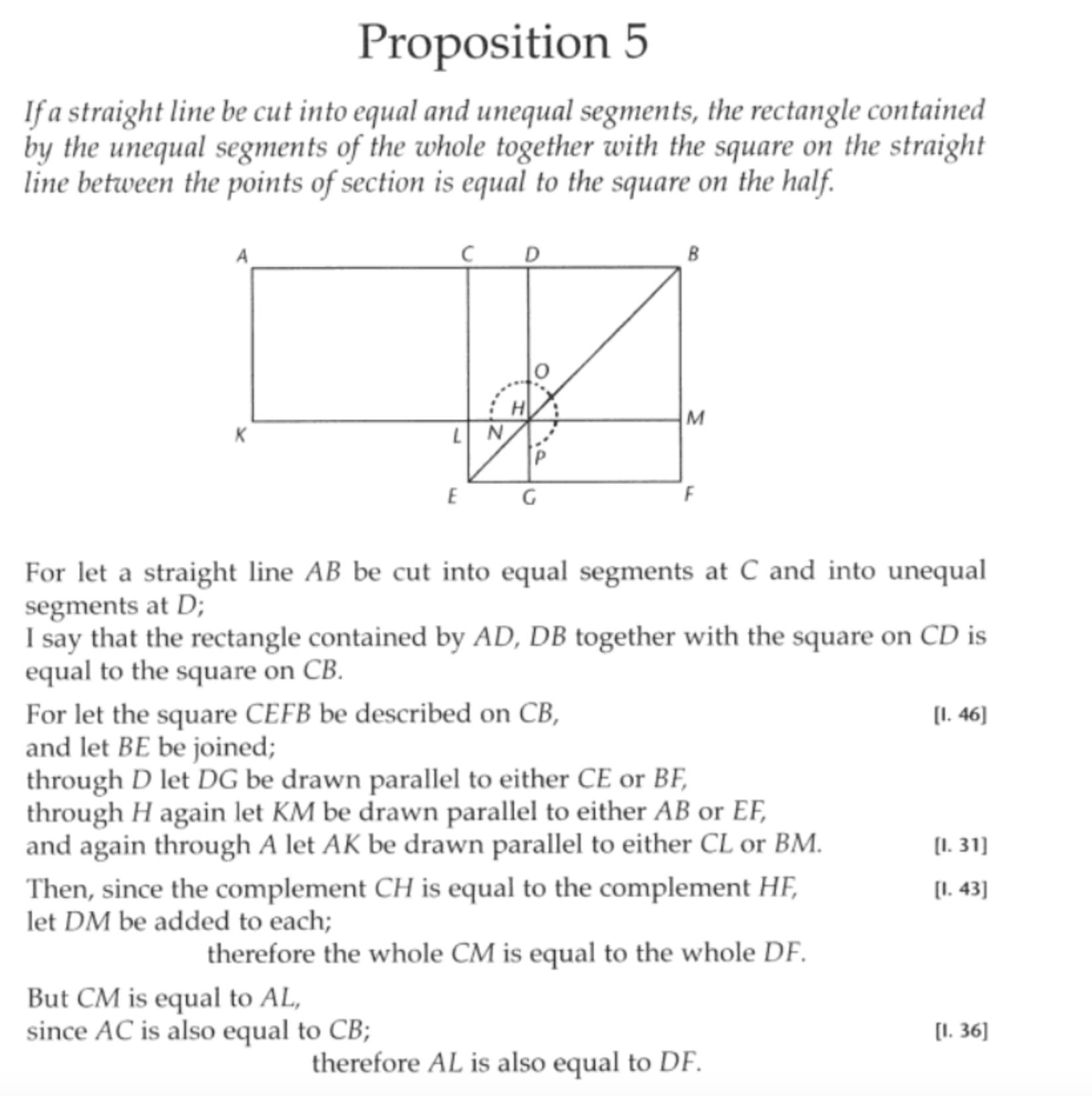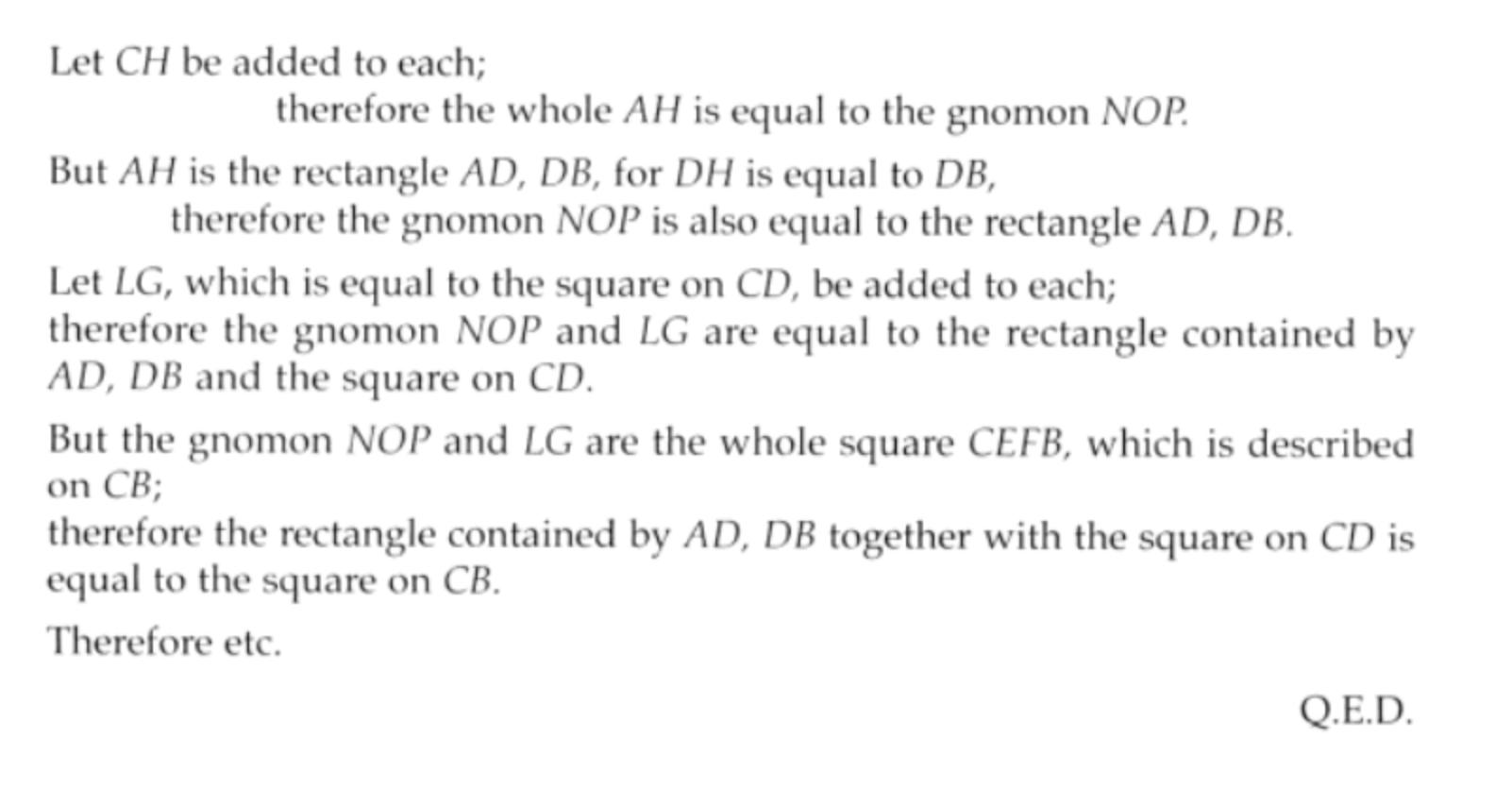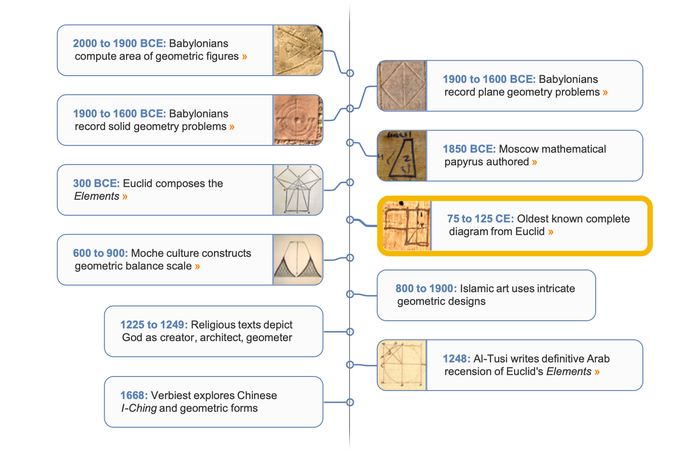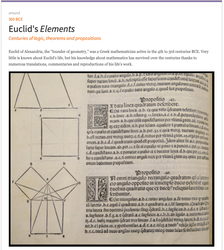around 75–125 CE
Euclid Diagram Papyrus
Oldest known complete diagram from Euclid's Elements
This fragment of a papyrus contains one of the oldest known complete diagrams from Euclid's Elements. It was discovered in Oxyrhynchus, Egypt, by an expedition of Grenfell and Hunt in 1896–1897.

The fragment contains an unlabeled diagram and a statement of the fifth proposition in Book 2 of the Elements: if a straight line be cut into equal and unequal segments, the rectangle contained by the unequal segments of the whole together with the square on the straight line between the points of section is equal to the square on the half. The statement can be interpreted as a geometric formulation of the algebraic identity (x + y)(x - y) + y² = x².
